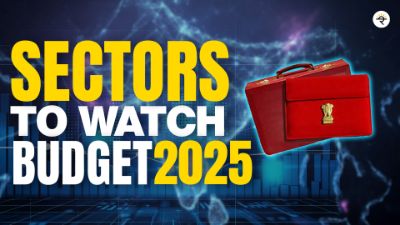The recently announced Union Budget 2025-26, presented by Finance Minister Nirmala Sitharaman, outlines an ambitious vision for India's economic future, built on four key pillars of development while introducing significant tax reforms to benefit the middle class. Let's dive deep into the major announcements and their implications.
Personal Taxation: A Relief for the Middle Class
The budget brings substantial relief to middle-class taxpayers with the announcement that there will be no income tax on average monthly incomes up to Rs 1 lakh. Under the new tax regime, salaried individuals can earn up to Rs 12.75 lakh per annum without paying any income tax, considering a Rs 75,000 standard deduction. This move is expected to boost household savings and consumption, though it will cost the government approximately Rs 1 lakh crore in revenue.

The Four Engines of Growth

1. Agriculture
Agriculture remains a cornerstone of the Indian economy, supporting 42.3% of the population and contributing 18.2% to the country's GDP. The budget introduces several measures to strengthen this sector, including a National Mission for edible oil seeds and initiatives to achieve self-sufficiency in edible oils and pulses. A notable development is the establishment of a Makhana Board in Bihar to boost production and marketing of this specialty crop.
2. MSME Sector
The budget recognizes MSMEs as crucial economic drivers, acknowledging that over 1 crore MSMEs contribute to 36% of India's manufacturing and 45% of exports while employing 7.4 crore people. The government has enhanced investment and turnover limits for MSME classification by 2.5 and 2 times respectively, making more businesses eligible for MSME benefits like easier access to loans and tax subsidies.

3. Investment
The investment strategy follows a three-pronged approach:
- Investment in People: Focusing on education expansion through IITs and medical facilities
- Infrastructure Development: Announcing new airports and enhancing regional connectivity
- Innovation Support: Establishing a Deep Tech Fund and allocating Rs 20,000 crore for research and development
4. Exports
With India facing a trade deficit of $32.8 billion in November 2024, the budget introduces measures to boost exports, including streamlined credit access for exporters and the creation of Bharat Trade Net, a unified digital platform for trade documentation.
Sector-Specific Initiatives
The budget makes significant announcements for various sectors:
- Power Sector: Plans to develop 100 GW of nuclear energy by 2047, with necessary amendments to the Atomic Energy Act
- Maritime Development: A Rs 25,000-crore fund for indigenous shipbuilding
- Tourism: Development of 50 tourist destinations through state partnerships
- Battery: Customs exemptions for 35 capital goods in EV & Mobile battery manufacturing
Fiscal Management
The government has shown commitment to fiscal consolidation by revising the fiscal deficit targets downward:
- 2024-25: From 4.9% to 4.8%
- 2025-26: From 4.5% to 4.4%
The total government expenditure is set at Rs 50.65 lakh crore for 2025-26, up from Rs 47.16 lakh crore in 2024-25.
Market Impact
The budget announcement had mixed effects on the market. While income tax reforms provided some positive momentum, the reduction in capital expenditure target to Rs 10.18 lakh crore from Rs 11.1 lakh crore caused some market volatility. Defense stocks faced pressure due to limited budget mention, despite defense accounting for 12% of government expenditure.
Conclusion
The Union Budget 2025-26 presents a balanced approach to economic growth, focusing on core sectors while providing tax relief to the middle class. The emphasis on self-reliance, infrastructure development, and digital transformation indicates a forward-looking vision for India's economic future. The success of these initiatives will depend on effective implementation and the government's ability to maintain fiscal discipline while pursuing growth objectives.



